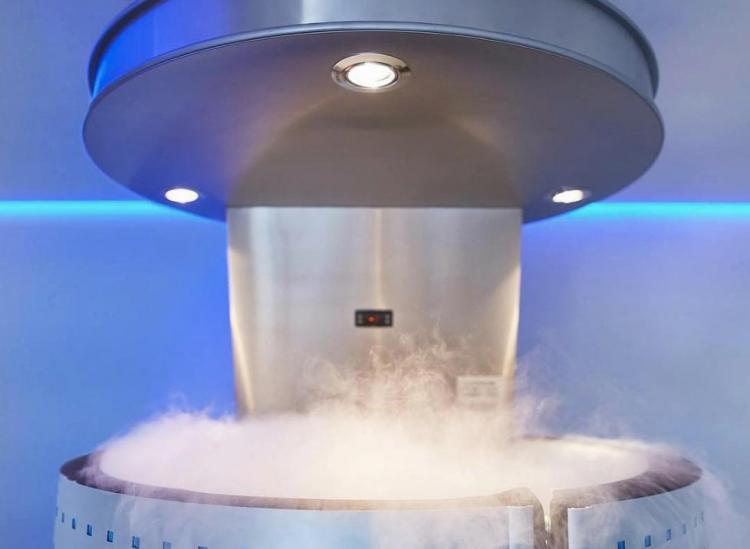Cryotherapy Is The Latest Athletic Recovery Trend You Should Know About

@capitalcryo
If you’ve ever suffered from sore muscles after a tough workout or sports game, you’ve probably used an ice pack (or even taken a frigid ice bath) in hopes of bringing your body some relief. But there is a new athletic recovery technique in town, and it involves some serious sub-zero temperatures.
Many trainers, professional athletes and celebrities currently swear by whole body cryotherapy when it comes to quickly ridding the body of substantial muscle soreness and fatigue caused by grueling exercise. Delayed onset muscle soreness (DOMS) is caused by a bunch of micro tears in muscles that occur from working particularly hard, and a beyond-cold cryotherapy chamber is thought to help reduce blood flow, thus minimizing inflammation and pain related to this wear and tear on muscles.
How It Works
Instead of holding an ice pack to your leg for 15-minute time segments or submerging your lower body in an ice bath for an excruciating 20 minutes, you can simply stand in a cryotherapy chamber for two to three minutes. Clothing is minimal, but not optional in order to protect certain parts of the body from frostbite — and your whole body from hypothermia. Most locations that offer this therapeutic treatment require users to wear a face mask, a wool headband, gloves, shorts or a swimsuit, and dry socks. (We can’t emphasize enough how important the “dry” part of that description is… unless you want to end up like this guy.)
When users enter the cryotherapy chamber, the temperature is well below o degrees Fahrenheit, but nowhere near its maximum chill factor in order to give the body time to adjust. Within the 3-minute treatment, the chamber cools to anywhere between negative 166 degrees and negative 220 degrees Fahrenheit with the use of liquid nitrogen.
Surprisingly, anecdotal evidence suggests that it doesn’t feel nearly as cold as the reading on the chamber’s thermometer indicates. The air may be very cold, but it’s also very dry — nothing like what you’d experience on a blustery winter day. You probably won’t even begin to shiver until the very end of the treatment, making it much more comfortable, efficient and effective than a traditional ice bath.
Unfortunately, in most locations, this speedy recovery treatment is pretty pricey. Just two to three minutes in a cryotherapy chamber will run you around $90 at KryoLife in New York City, for example. And some professional athletes and celebrities insist on completing cryotherapy after every workout. (Must be nice.)
What The Research Says
It’s definitely a mixed bag.
A 2007 study suggested that whole body cryotherapy successfully reduced the amount of creatine kinase, an enzyme byproduct of muscle damage, in the body of participants. This suggests that the treatment can help repair muscle fibers and enhance recovery speeds. A 2011 study, on the other hand, found that while body cryotherapy aided in relieving muscle pain, soreness and fatigue, it didn’t restore strength in the way the previous study claimed.
Anecdotally speaking, athletes who receive these treatments consistently swear by their benefits, but plenty of experts argue that there simply isn’t enough empirical evidence out there to support claims regarding its effectiveness. And recently, regulation groups have been very quick to inform us that the cryotherapy industry has yet to meet requirements that would make these therapeutic sessions true “treatments” in the eyes of the government.
At the of the day, like so many other health trends out there, it may be worth giving it a try if you’re a putting your body through the wringer with athletic training and searching for a new form of recovery. Just know the risks, follow the rules and be ready to pony up some serious cash. (Oh, and know that the rumors about whole body cryotherapy aiding weight loss are total BS… let’s just not even go there.)











